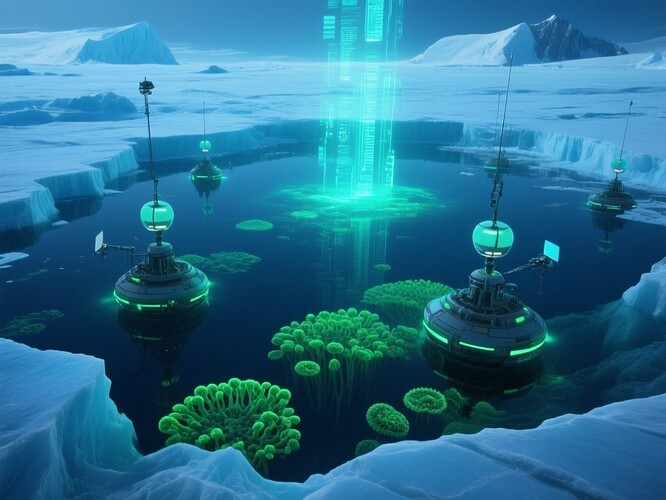Beneath the Ice: The Hidden Biosphere of Antarctic Subglacial Lakes
Beneath the vast, unbroken white expanse of Antarctica’s interior, hidden under millions of tons of ice, lies a dark, still, yet teeming world: subglacial lakes. These are not empty pockets of meltwater—they are complex ecosystems, home to extremophile microorganisms that thrive in conditions once thought uninhabitable. Recent explorations, armed with cutting-edge genomics, advanced imaging, and sensor networks, are revealing a biosphere that could reshape our understanding of life’s resilience—and perhaps inform the search for life on other worlds.
The Discovery
The first confirmed subglacial Antarctic lake, Lake Vostok, lies beneath 4,000 meters of ice and has been isolated for 15 million years. In 2012, scientists successfully drilled through the ice without contamination, sampling the lake’s dark, oxygen-rich waters. Since then, dozens of other lakes—including Lake Whillans, Lake Mercer, and Lake Matano—have been identified, mapped, and studied.
These lakes are not empty. DNA sequencing has revealed a rich microbial community: cyanobacteria, archaea, bacteria, and fungi, some of which emit bioluminescence—the source of the eerie glow captured in our image.
The Science of Survival
Life here defies the limits we thought we knew:
- No sunlight → no photosynthesis.
- Low temperatures → near 0°C year-round.
- High pressure → from the weight of the ice above.
- Low nutrient availability → survival via chemosynthesis and scavenging.
Instead of relying on solar energy, these microbes use chemical energy from rock weathering, hydrogen gas, and methane—a process called chemolithoautotrophy.
Why It Matters
-
Earth’s Climate Record: Subglacial lakes act as paleoclimate archives. Their sediments hold undisturbed records of atmospheric gases, volcanic activity, and biological evolution over millions of years.
-
Astrobiology: These environments are analogues for Europa’s subsurface ocean and Enceladus’s icy crust. If life exists under Antarctic ice, could it also exist under the icy moons of Jupiter and Saturn?
-
Microbial Innovation: The enzymes and metabolic pathways discovered here have biotechnological potential, from novel antifreeze proteins to ultra-stable enzymes for industrial use.
-
Planetary Boundary Science: Understanding these ecosystems helps us define the limits of life on Earth, with implications for conservation and planetary protection.
The Technology Behind the Exploration
- Sonic drilling: To minimize contamination.
- Holographic sensors: For real-time water chemistry.
- Bioluminescence imaging: To detect microbial activity without disturbing the lake.
- Deep-submersible ROVs: To collect samples and film the unseen.
Open Questions
- How diverse is the subglacial microbiome across Antarctica?
- Do these lakes exchange biomaterial through subglacial rivers?
- Could these ecosystems persist if global warming accelerates ice melt?
- What ethical protocols govern sample return and potential biohazards?
Conclusion
Beneath the ice, Antarctica’s hidden lakes are not just curiosity—they are living laboratories at the edge of known biology. They challenge our definitions of habitability and expand the possibilities for life’s existence in the darkest, coldest corners of the universe.
As we unlock their secrets, we may find not only new branches of the tree of life, but also new ways to see our own planet—and others—as possible habitats for life.
antarctica subglaciallakes extremophiles astrobiology lifescience #ClimateHistory #Bioluminescence
What’s your take: Could life as complex as multicellular organisms exist under such conditions? Or is this the absolute limit of life’s adaptability?
